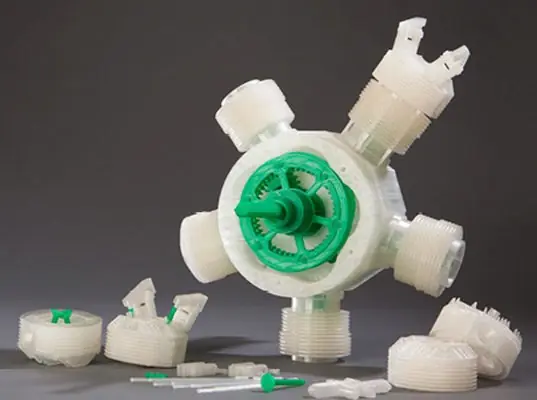Reducing 3D Print times – Why and How
Additive manufacturing is often criticised as being slow relative to other subtractive rapid manufacturing techniques like CNC. Although 3D printing is likelier to save time in the long run by accelerating prototyping and mold challenges, subtractive manufacturing may be faster in certain situations given the proper resources. Most product designers and 3D printers would testify to an array of issues that impact the part printing time especially when dealing with plastic parts. Today, we take a look at additive manufacturing (3D printing), the common causes of slowness/downtimes and efficient solutions that can help save time and improve the overall job turnaround.
What are the common causes of Long printing times?
In order to tackle the challenge of long printing times, we take an objective review of the factors that contributes minutes to a point and how to avoid them. At a glance, most of these issues will relate to printing surface area, the presence of support material, layer height, design optimisation and the use of speed holes. Letʼs take a look at some of these time wasters in more light.
A. Support Materials
Support materials may be required to ensure the smooth outcome a 3D print job. Depending on the nature and size of the job, the extent of support required will have a profound effect on the printing time more than any other factor. This is because adding support material to your print is similar to adding extra surface area for the printer to run. One of the ways to eliminate the added print time arising from the use of support materials may include splitting your part from into simpler units to limit overhangs. As long as the structural integrity of your simpler units are not compromised, you can put them together to get a similar strength and functionality that you would have gotten if you had printed your part as a unibody.
You can also try to check an alternative printer orientation as changing the orientation of a part has been proven to have a reasonable effect on the overall print duration. Generally, wherever your project allows it, try to print without the use of any support material to save time and effort.
B. Surface Area
Perhaps the highest contributing factor to increased print times, large surface areas mean that your printer will have to process and produce more materials into part walls. The surface area will increase the print time in both qualitative and quantitative areas. For instance, a small part with significant detailing on its surface will take longer to print that a large part with fine, simple details. Also, understandably, parts with larger surface areas will print longer than smaller parts.
The reason why surfaced area affects print time is actually due to the print head positioning, which is noticeably slower when printing walls than internal details and structures.
C. Design for additive manufacturing (custom 3d printing)
Generally, if you have a design in your part that is mainly for aesthetics with no profound effect on the part functionality, keeping it simple is the best way to achieve faster results. Only design your product with faucets and parts that are instrumental to its functionality. Printing trivial parts that do not need to be in the design will not only impact time but also thin out your budget and up your cost. Try to not overuse 3D printing by printing complex parts and only expend effort on print geometries that actually need to be printed.
D. Speed holes
Speed holes are often used for material saving when making 3D printed parts. As much as this may impact your cost, it certainly wonʼt save you time. Speed holes may be likened to adding more surface area to the project as the machine has to deal with the internal detailing and geometry. Speed holes may cut cost, but will often add about 10-15 percent or more time to print depending on the size and complexity of the part geometry.
E. Layer height
The layer resolution is directly proportional to the print time. This is generally true of both 2D and 3D printing because the layer resolution is affected by the layer height. When looking to run quick, sample project, consider compromising on a little less surface quality finish by increasing your layer height and saving valuable time.
F. Failed jobs
Although this not a direct consequence of longer printing time, the overall time spent on a project may also be considered to include the total time spent before making the final and satisfactory print. Asides the time that you could save by avoiding failed prints, consider the materials and effort that go to waste.
Before running your jobs, ensure that your design already matches the desired specifications, material is well loaded and printing bed is properly levelled. You can also limit the chances of failed jobs by running quick unit tests using plastic-only materials with sub-optimal resolutions and warping.
Conclusion
Saving time on prints is a fickle art: it varies greatly on a part to part basis and doesn’t always work as you’d expect. However, using these tips will save you valuable time and help reduce your print durations.
Custom 3D Printing Project Started Today
Are you looking for a printer for your latest 3D project? Do you need something more than the everyday 3D printing capabilities? FirstPart’s 3D printing solutions can offer you excellent services that ensures accuracy, scalability, repeatability at a cost-effective price.
All our parts are thoroughly scrutinized for quality control, ensuring that only the best parts that are as light as possible, functional and effective in performance are produced from even the most complex 3D designs.










